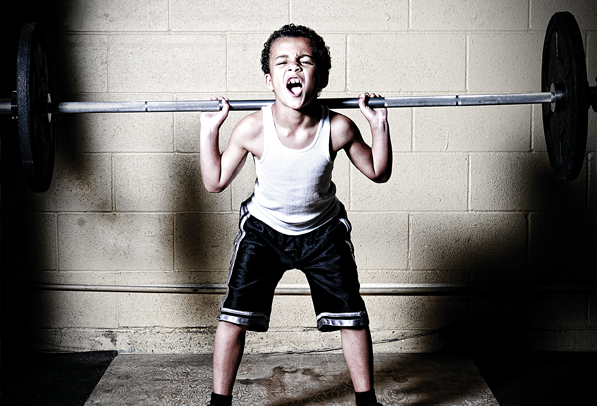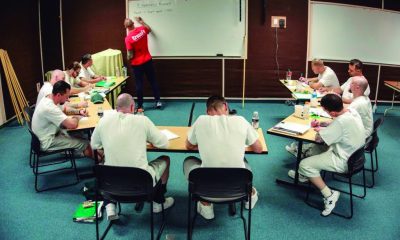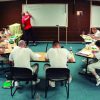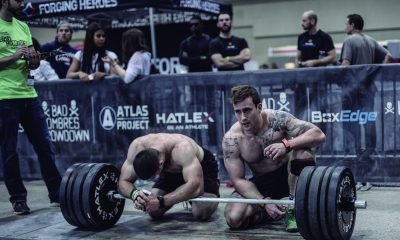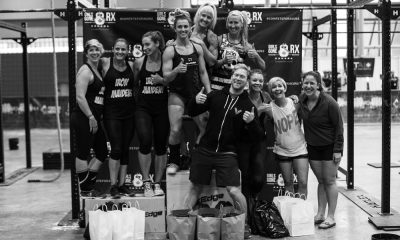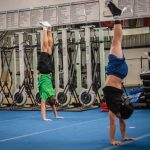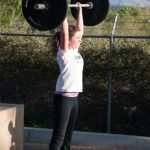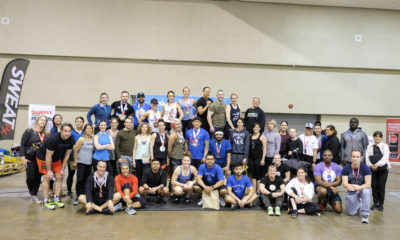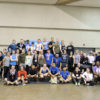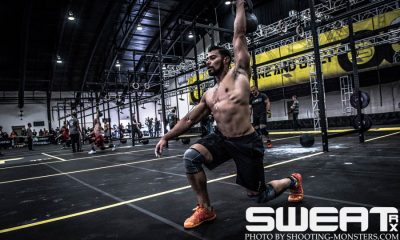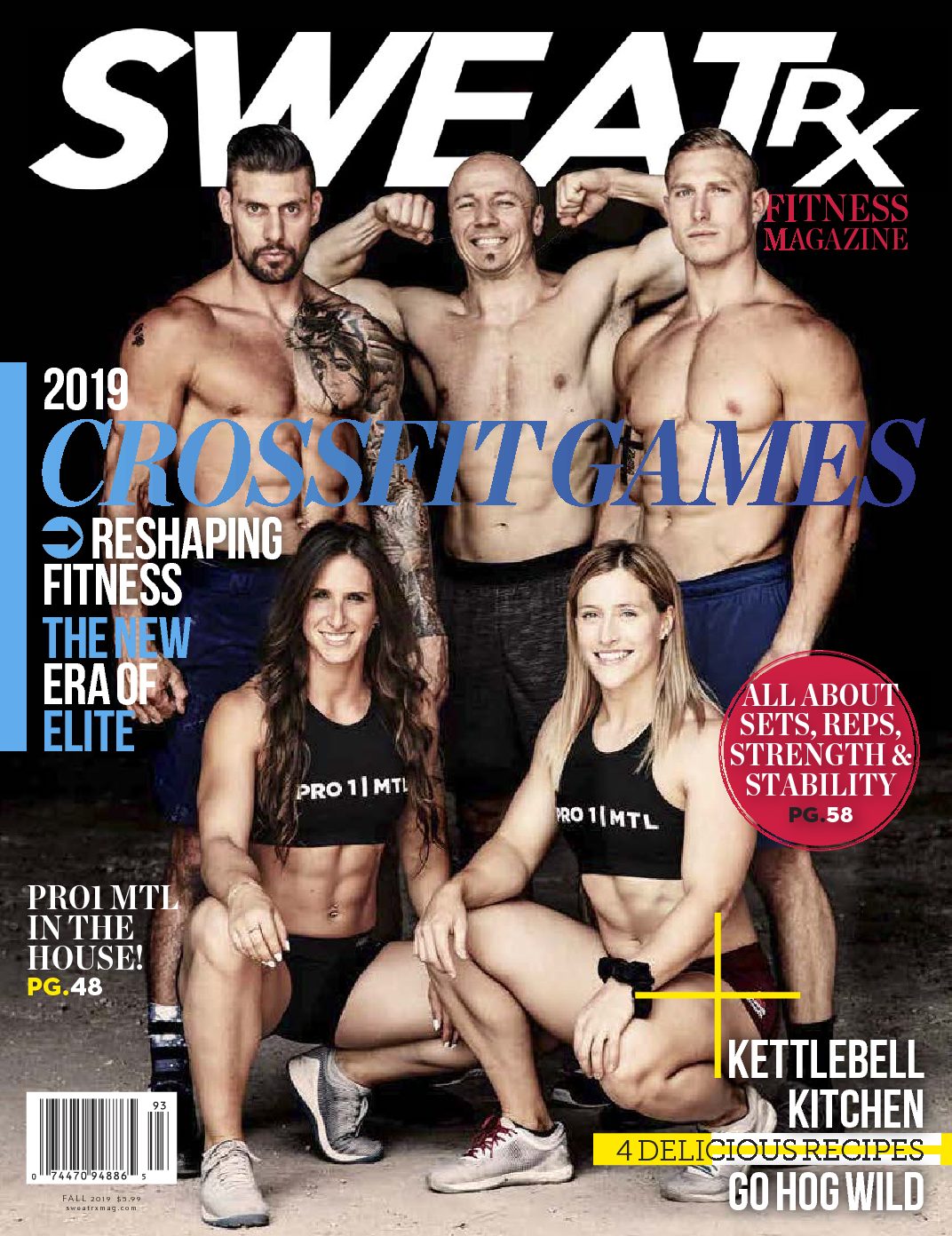Featured
Jeff Martin and CrossFit Kids. Building a leaner, stronger, smarter generation
Childhood obesity is a growing problem in North America. According to the Centers for Disease Control and Prevention (CDC), 17 percent of US children are obese. While that number drops to 10 percent in Canada, according to the Canadian Obesity Network, it’s still quite tragic. Obese children often become obese adults, facing increased risks of life-threatening health conditions including cancer, cardiovascular disease and diabetes.
Physical inactivity is at least partially to blame. In both countries, health organizations advocate 60 minutes of moderate to vigorous activity for children each day. According to Active Healthy Kids Canada, only 7 percent of children between the ages of 5 and 11 meet those guidelines. The percentage drops to 5 percent for those between the ages of 12 and 17. Less than 50 percent of all American kids achieve an adequate level of physical activity, according to the Institute of Medicine.
Where public school physical education classes—and multiple outdoor recesses—used to encourage kids to do plenty of running and playing, increasing academic demands and budget woes have seen non-core subjects trimmed along with budgets. For the most part, it falls to parents to ensure their children stay active for optimum health—and CrossFit Kids can help.
Started in 2004 by Jeff and Mikki Martin, owners of CrossFit Brand X in Ramona, California, CrossFit Kids classes are now available at more than 1,200 CrossFit affiliates worldwide. The strength and conditioning program specifically designed for kids and teens is changing lives for the better by encouraging young people to develop a lifelong love of fitness that is broad, general and inclusive.
“The goal with CrossFit is to increase work capacity across broad time and modal domains,” says Jeff Martin, director of youth programs for CrossFit and CrossFit Kids. “Certainly, we want to see that with our children. But more importantly, our primary goal for CrossFit Kids is to pair fitness and fun. Long-term adherence to the program means kids develop healthier lifestyles. And the only way to do that is to make sure that they think what they are doing is fun.”
Martin achieves this goal by programming WODs specific to each age group—from preschoolers to kids to pre-teens and teens—and including plenty of variety. Novelty keeps the kids engaged in each workout and excited about their next trip to the box. A preschool class, for example, starts with a warm up followed by skill work (such as squats), a short workout, and a game. The teen class starts with a warm up and skill work followed by a slightly longer WOD.
“As far as programming, when you go to a CrossFit Kids class, there are a lot of things we do more of than in the adult program,” Martin says. “For example, we focus more on gymnastics and tumbling.
Those are important tools for vestibular development as well as kinesthetic awareness.” Mechanics and consistency are paramount—not intensity. “Trainers always come back to the mechanics part and rarely push the intensity part,” he says. “Kids bring their own intensity to the workout, the gym, or whatever they are doing, so we focus more on the mechanics of the movement. That’s why the kids who come out of our programs move so well.”
When Martin began unofficially scaling CrossFit for kids in 2003, his three sons were his first converts.
They quickly began setting physical fitness testing records in school. Other participants of CrossFit Kids have followed in their footsteps, becoming star athletes in extracurricular sports. “There’s an all-star soccer team with 12 or 15 players in our area,” says Martin. “Four of them are from our gym. They are girls who can run longer than the other kids. They’re stronger than the other kids, and they have a better movement pattern so they don’t get injured.”
But the benefits of CrossFit for kids are not purely physical. Martin has seen extraordinary personal growth in students as well. “It’s harder to express the intangible benefits,” he says. “While it’s great to see a kid squat well, some of the character traits we see kids developing are the things we’re really proud of. We see kids develop perseverance, self-discipline, and long-term goals. We see them exhibit honor and integrity. These kinds of things are harder to measure, but they’re part of our program.”
Learning to work through tough WODs without giving up has many benefits for kids outside the gym.
“Character lessons are best learned in the gym because you can fail there, easily get back up, brush yourself off, and go out and try it again,” says Martin. “The process teaches kids a healthy way to approach life. In the gym, if you can’t do Fran the first time without partitioning it, well, that’s just like math. You can look at a problem, decide it’s too hard and just give up, or you can start doing it, put little pieces together, and before you know it, you’ve solved the whole problem.”
In general, students who are also CrossFit Kids participants tend to perform better in school. Says Martin, “Very early on, parents started telling us their kids’ grade points were going up. I talked to my friend, Dr. Jon Gary, about the phenomenon and he gave me reams of data showing a very strong link between physical fitness and cognitive fitness.”
The connection between physical activity and brain function is well documented. According to research cited by the CDC, physical activity affects the physiology of the brain by increasing cerebral capillary growth, blood flow, oxygenation, production of neurotrophins, growth of nerve cells in the hippocampus, neurotransmitter levels and more. These changes are associated with improved cognitive function in regards to attention and information processing.
“While we don’t have a study that shows specifically that CrossFit Kids works better than any other form of physical activity, the fact that it gets kids moving at a high intensity means it is helping to promote hormones in the brain that actually help kids to learn,” Martin says. His exploration of the subject with Gary led to the creation of CrossFit Study Hall at CrossFit Brand X.
“We have our teens bring in homework for whatever subject they’re having the most trouble with. After their WOD, they study for 15 to 30 minutes. We’ve even hired a tutor to come in and work with them. We’re starting to do this with the younger kids now as well, and we’ve had great success,” Martin says. “Our kids all have very good GPAs.” Other CrossFit affiliates have followed suit with the Kids program.
You will now find CrossFit Study Hall, special SAT programs, and other CrossFit Kids’ initiatives all over the world. Schools are starting to notice. More than 1300 teachers have contacted Martin and his staff about ways to use CrossFit for before and after school programs as well as within a physical education format. He recently met with administrators from Clark County, the fifth largest school district in the nation, about the CrossFit Kids program at Rancho High School in Las Vegas, Nevada. It has been so successful they’re planning to implement it across 10 high schools beginning next year.
Getting CrossFit Kids into more schools is one of Martin’s goals for the future. “If you watch a standard P.E. class and a CrossFit Kids class, they are very different,” he says. “With CrossFit Kids, you find engaged students who are experiencing success every time they walk through the door. Going back to our goal, we want kids to be active and healthy their entire life. The best way to do that is to get them engaged and wanting to come back. CrossFit Kids does exactly that.”





